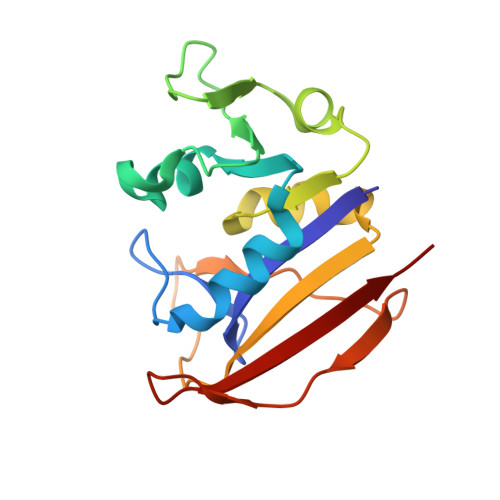Mycobacterium Tuberculosis Dihydrofolate Reductase is a Target for Isoniazid
Argyrou, A., Vetting, M.W., Aladegbami, B., Blanchard, J.S.(2006) Nat Struct Mol Biol 13: 408-413
- PubMed: 16648861
- DOI: https://doi.org/10.1038/nsmb1089
- Primary Citation of Related Structures:
2CIG - PubMed Abstract:
Isoniazid is a key drug used in the treatment of tuberculosis. Isoniazid is a pro-drug, which, after activation by the katG-encoded catalase peroxidase, reacts nonenzymatically with NAD(+) and NADP(+) to generate several isonicotinoyl adducts of these pyridine nucleotides. One of these, the acyclic 4S isomer of isoniazid-NAD, targets the inhA-encoded enoyl-ACP reductase, an enzyme essential for mycolic acid biosynthesis in Mycobacterium tuberculosis. Here we show that the acyclic 4R isomer of isoniazid-NADP inhibits the M. tuberculosis dihydrofolate reductase (DHFR), an enzyme essential for nucleic acid synthesis. This biologically relevant form of the isoniazid adduct is a subnanomolar bisubstrate inhibitor of M. tuberculosis DHFR. Expression of M. tuberculosis DHFR in Mycobacterium smegmatis mc(2)155 protects cells against growth inhibition by isoniazid by sequestering the drug. Thus, M. tuberculosis DHFR is the first new target for isoniazid identified in the last decade.
Organizational Affiliation:
Department of Biochemistry, Albert Einstein College of Medicine, 1300 Morris Park Avenue, Bronx, New York 10461, USA.

















